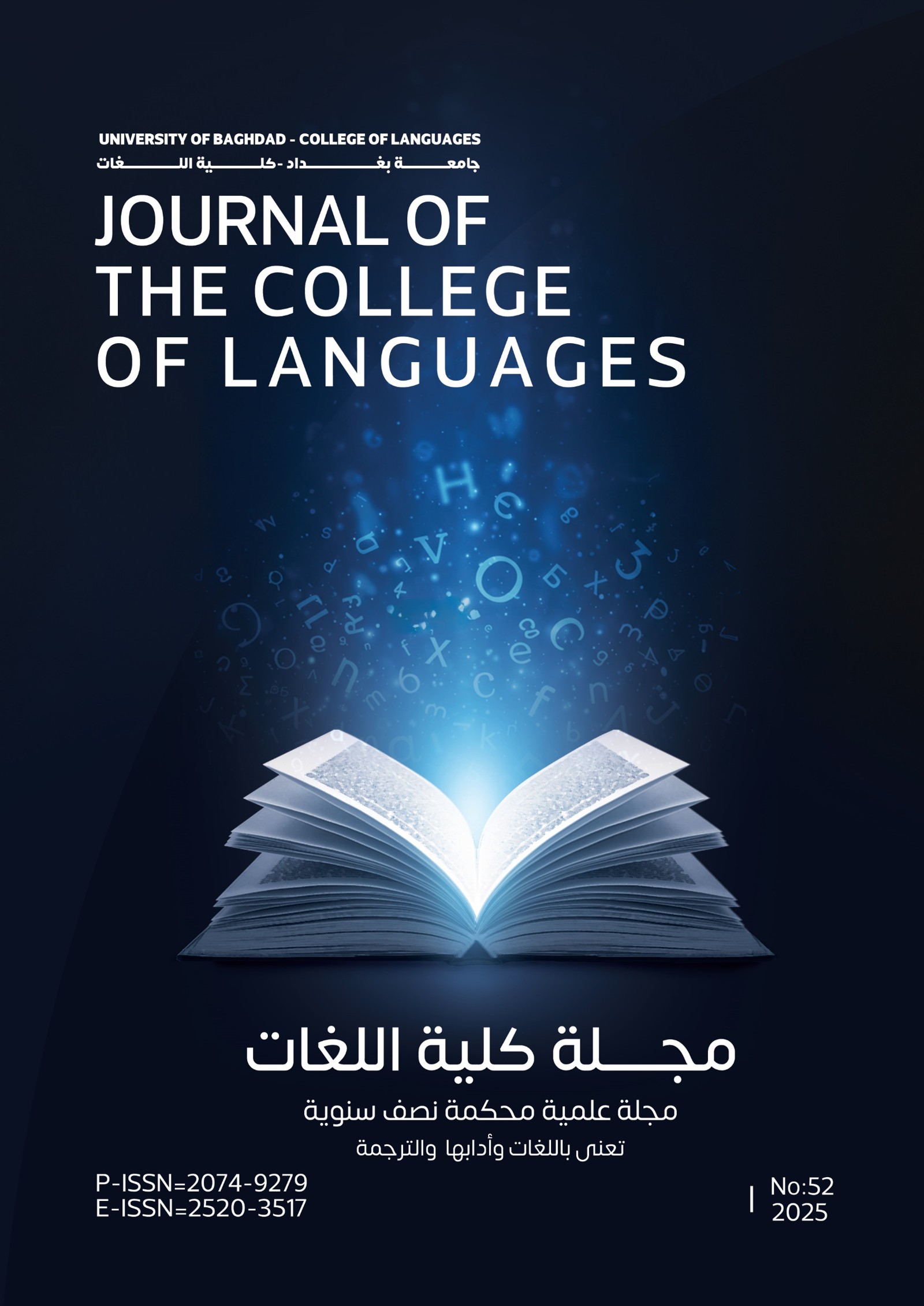"Words of threat in Hebrew language- Pragmatic study"
ביטויי האיום בלשון העברית (עיון פרגמטי)
DOI:
https://doi.org/10.36586/jcl.2.2022.0.46.0368Keywords:
פרגמטיקה, פעולת הדיבור, איום, סוגי האיום,הזהרה, הבטחהAbstract
The present study approaches an analytical and deliberative analysis of the words of threat in number of Hebrew language examples through exploring all the reasons and conditions of threat act. Moreover, and because of the difficulty to make a distinction between the two verbs, the study discusses the use of the verbs “to warn and to threat” as one of the most common types verbs used in Hebrew language that implies internal threat. Threat is one of most prominent speech acts that language users resort to as a means to achieve intended threat goals. In Hebrew, it is expressed in different ways and depends on different aspects, including (internal and external context, circumstances in which the threat is made, the speaker and the recipient position, and types of intended goal; "negative or positive"). The study concludes that all threat types help to attain its intended goals and “internal threat” is the most commonly used type that could be expressed in different Hebrew verbal acts.המחקר הזה שופך אור על טרמינולוגית האיום בלשון העברית על ידי ניתוח פרגמטי של כמה מודלים לשוניים, בנוסף להצגת סוגי האיום הבסיסיים, וסקירת התנאים למימושם. כמו כן, נדון ביחס השימוש בשני פעולות הדיבור "ההזהרה וההבטחה" עם פעולת האיום, ובגילוי כיצד להשיג באמצעותם, שכן הנמען מתמודד עם קושי להבחין בין שלושת הפעליםהללו. האיום הוא אחת פעולות הדיבור הבולטות שבהן נוקט הדובר כאמצעי להשגת מטרות מסוימות הקשורות לעניין אישי ולפי תנאים ספציפיים. ניתן להבין את האיום על ידי הסתמכות על ידע של היבטים מסוימים, כול: (הקשר פנימי וחיצוני, נסיבות שבהן הושמע האיום המילולי, הסמכות הן של המוען והן של הנמען, וסוג המטרה שיש להשיג, בין אם היא חיובית או שלילית).
מחקר זה הגיע למסקנה כי מעשה האיום מכל הסוגים הוא אמצעי יעיל להשגת מטרות אינדיבידואליות וקולקטיביות. עוד הגיע למסקנה שסוג האיום הנפוץ ביותר בעברית הוא "איום עקיף" מכיוון שניתן לבטא אותו בדרכים שונים באמצעות פעולות דיבור אחרות.
References
- Ya'akov Churgin, 2018)), from subdued to horizon no tastier-tasting of revisionist literature, Israel, Menachem Begin-Jerusalem Heritage Center.
- Yishai Rosen-Zvi, (2020), Between Mishna and Midrash: Reading the Biblical Literature, Open University of Israel.
- Andrew Heywood, (2019), Modern political ideologies, Open University of Israel.
- Yaakov Bentolila, (2003), A voice for Yaakov, A collection of articles in honor of prof, Israel, University of Ben Guryon.
- Tamar Sovran, (2006), Language and meaning: the birth and growth of cognitive semantics, Israel, University of Haifa.
- Anat Calo- Lavroon, (2019), Reality- How to be the version, Israel, Kinneret Zamora- Bitan Dvir.
- Einat Danon, (2014), Other's People's Girl, Israel, Media publishing house.
Downloads
Published
Issue
Section
License
Copyright (c) 2022 Journal of the College of Languages (JCL)

This work is licensed under a Creative Commons Attribution 4.0 International License.








